Enermax D.F. 500W PSU Review
The Enermax D.F. 500W is a fully modular PSU featuring high efficiency, quiet operation, and individually sleeved cables. But are those enough to justify its premium price tag?
Why you can trust Tom's Hardware
Transient Response Tests
Advanced Transient Response Tests
For details on our transient response testing, please click here.
Ιn these tests, we monitor the EPF500AWT's response in several scenarios. First, a transient load (10A at +12V, 5A at 5V, 5A at 3.3V, and 0.5A at 5VSB) is applied for 200ms as the PSU works at 20 percent load. In the second scenario, it's hit by the same transient load while operating at 50 percent load.
In the next sets of tests, we increase the transient load on the major rails with a new configuration: 15A at +12V, 6A at 5V, 6A at 3.3V, and 0.5A at 5VSB. We also increase the load-changing repetition rate from 5 Hz (200ms) to 50 Hz (20ms). Again, this runs with the PSU operating at 20 and 50 percent load.
The last tests are even tougher. Although we keep the same loads, the load-changing repetition rate rises to 1 kHz (1ms).
In all of the tests, we use an oscilloscope to measure the voltage drops caused by the transient load. The voltages should remain within the ATX specification's regulation limits.
These tests are crucial because they simulate the transient loads a PSU is likely to handle (such as booting a RAID array or an instant 100 percent load of CPU/GPUs). We call these "Advanced Transient Response Tests," and they are designed to be very tough to master, especially for a PSU with a capacity of less than 500W.
Advanced Transient Response at 20 Percent – 200ms
| Voltage | Before | After | Change | Pass/Fail |
|---|---|---|---|---|
| 12V | 12.134V | 11.987V | 1.21% | Pass |
| 5V | 5.058V | 4.984V | 1.46% | Pass |
| 3.3V | 3.350V | 3.237V | 3.37% | Pass |
| 5VSB | 5.094V | 5.036V | 1.14% | Pass |
Advanced Transient Response at 20 Percent – 20ms
| Voltage | Before | After | Change | Pass/Fail |
|---|---|---|---|---|
| 12V | 12.134V | 11.936V | 1.63% | Pass |
| 5V | 5.059V | 4.979V | 1.58% | Pass |
| 3.3V | 3.350V | 3.201V | 4.45% | Pass |
| 5VSB | 5.094V | 5.034V | 1.18% | Pass |
Advanced Transient Response at 20 Percent – 1ms
| Voltage | Before | After | Change | Pass/Fail |
|---|---|---|---|---|
| 12V | 12.134V | 11.944V | 1.57% | Pass |
| 5V | 5.059V | 4.966V | 1.84% | Pass |
| 3.3V | 3.349V | 3.189V | 4.78% | Pass |
| 5VSB | 5.094V | 5.024V | 1.37% | Pass |
Advanced Transient Response at 50 Percent – 200ms
| Voltage | Before | After | Change | Pass/Fail |
|---|---|---|---|---|
| 12V | 12.116V | 11.981V | 1.11% | Pass |
| 5V | 5.032V | 4.964V | 1.35% | Pass |
| 3.3V | 3.322V | 3.219V | 3.10% | Pass |
| 5VSB | 5.051V | 4.998V | 1.05% | Pass |
Advanced Transient Response at 50 Percent – 20ms
| Voltage | Before | After | Change | Pass/Fail |
|---|---|---|---|---|
| 12V | 12.118V | 11.844V | 2.26% | Pass |
| 5V | 5.034V | 4.941V | 1.85% | Pass |
| 3.3V | 3.323V | 3.165V | 4.75% | Pass |
| 5VSB | 5.051V | 4.986V | 1.29% | Pass |
Advanced Transient Response at 50 Percent – 1ms
| Voltage | Before | After | Change | Pass/Fail |
|---|---|---|---|---|
| 12V | 12.114V | 11.893V | 1.82% | Pass |
| 5V | 5.033V | 4.930V | 2.05% | Pass |
| 3.3V | 3.322V | 3.197V | 3.76% | Pass |
| 5VSB | 5.051V | 4.988V | 1.25% | Pass |
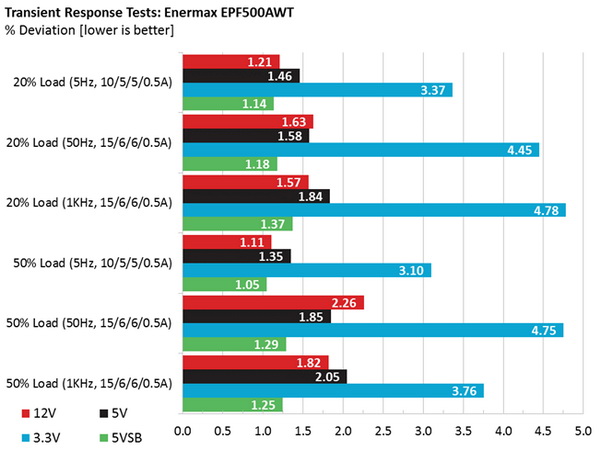
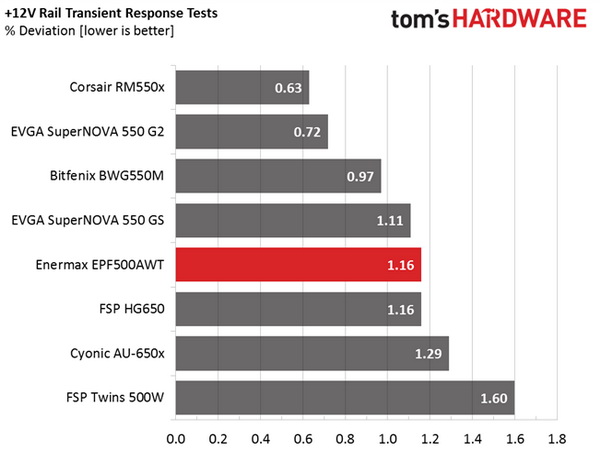
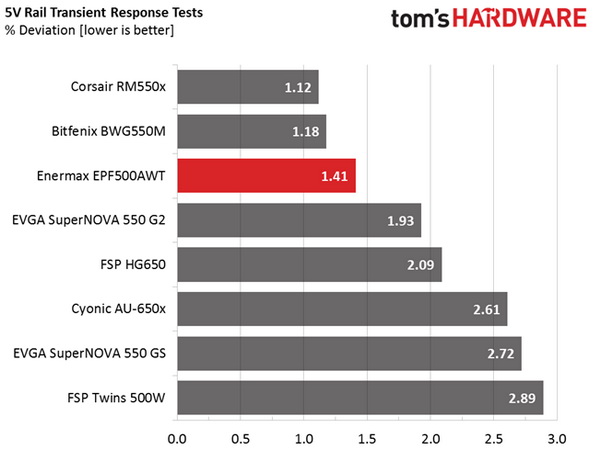
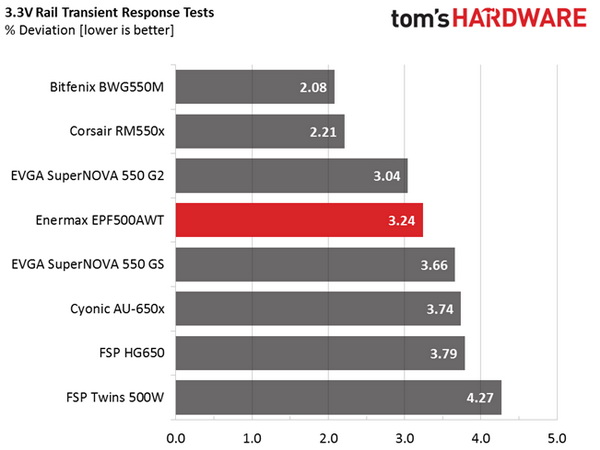
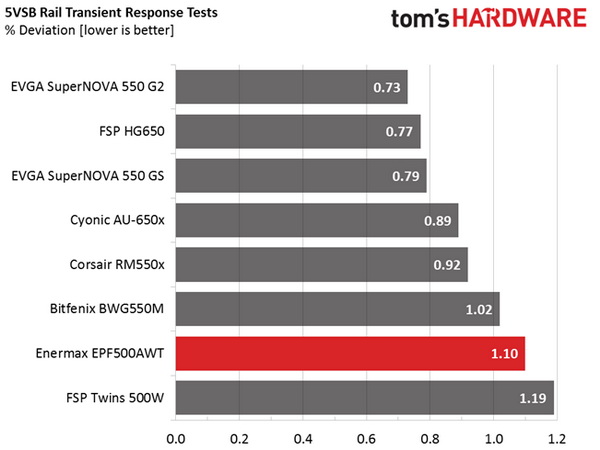
Despite its low capacity, the EPF500AWT manages good overall performance in our transient tests.
Get Tom's Hardware's best news and in-depth reviews, straight to your inbox.
Here are the oscilloscope screenshots we took during Advanced Transient Response Testing:
Transient Response At 20 Percent Load – 200ms


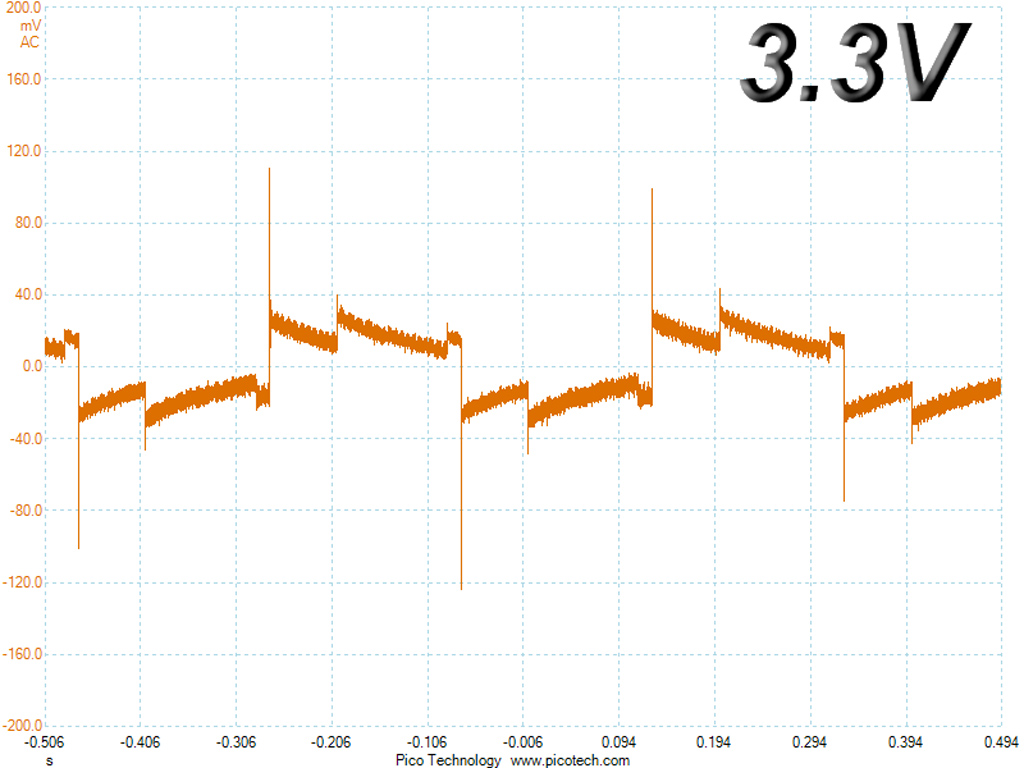
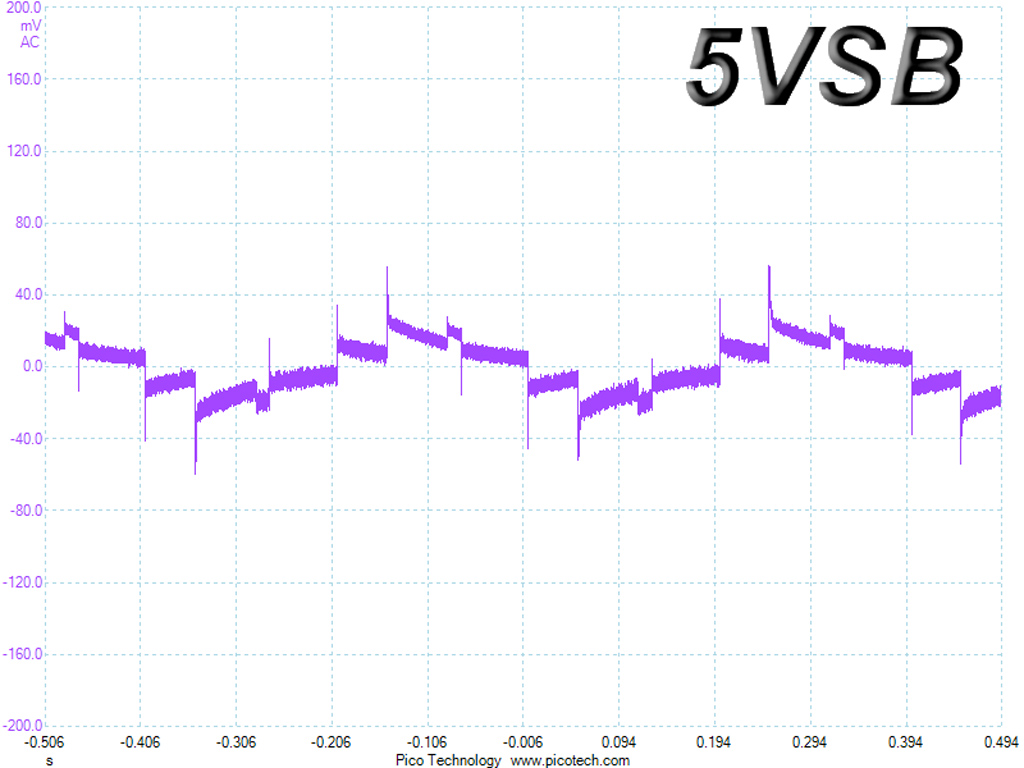
Transient Response At 20 Percent Load – 20ms
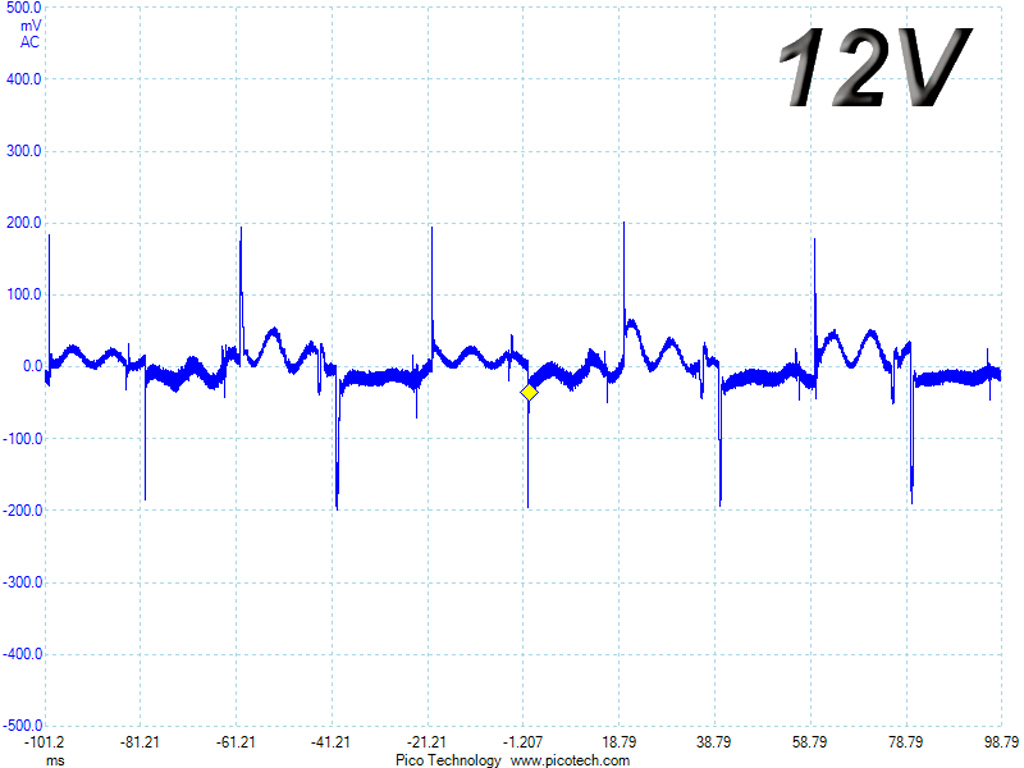
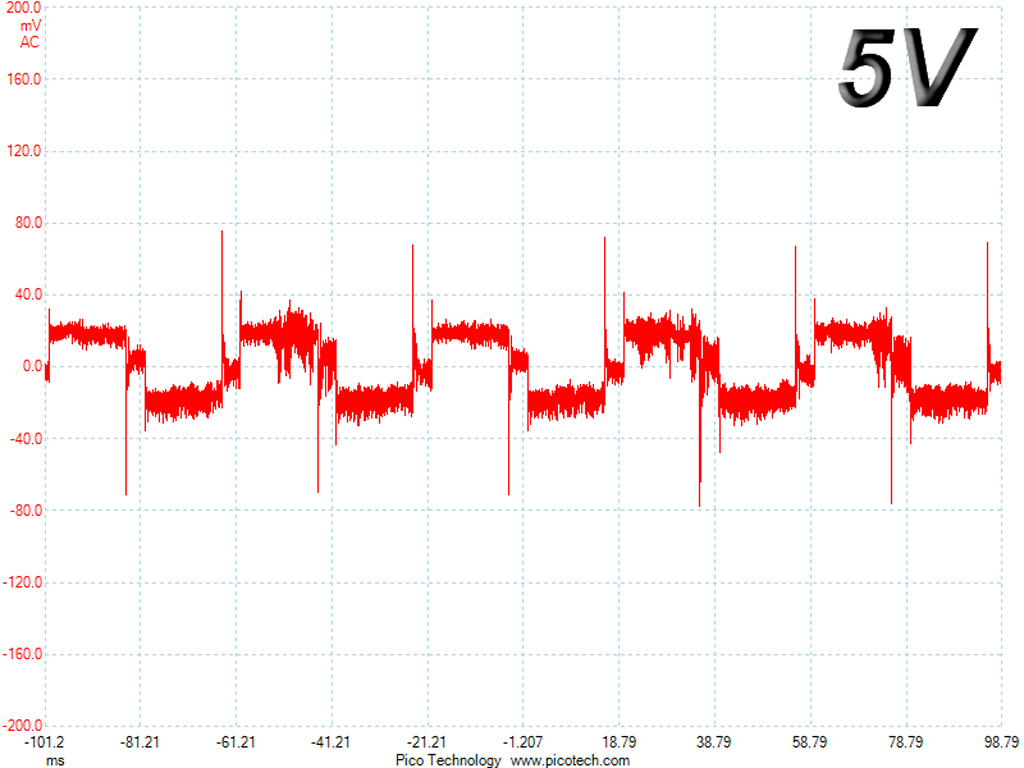
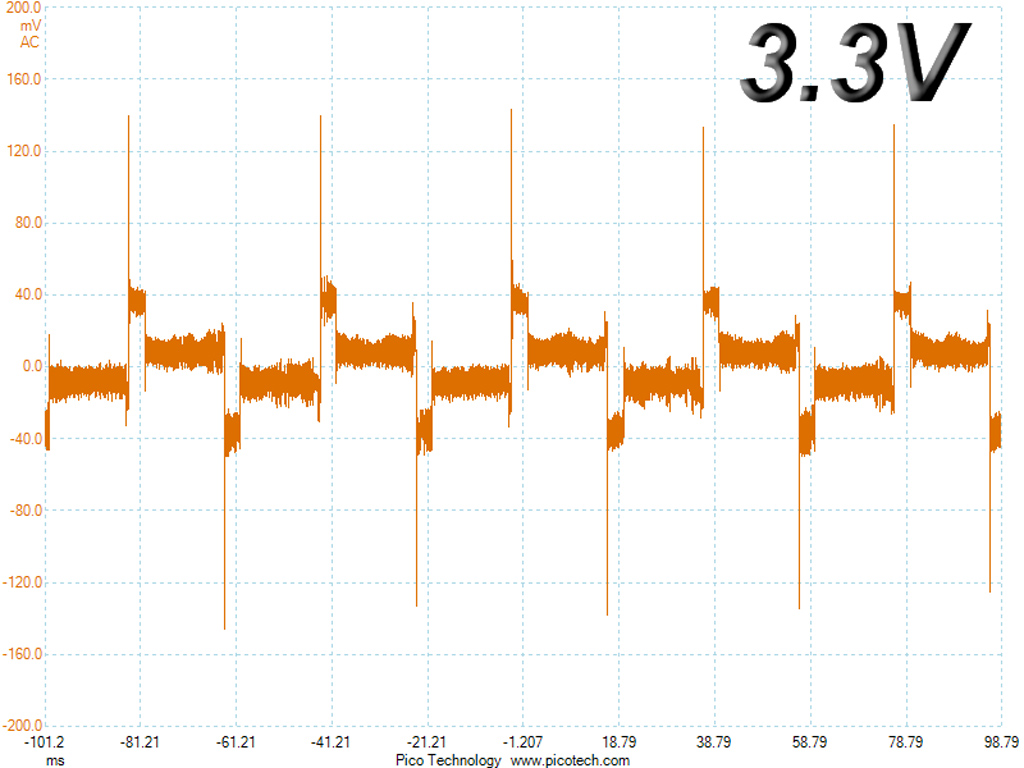
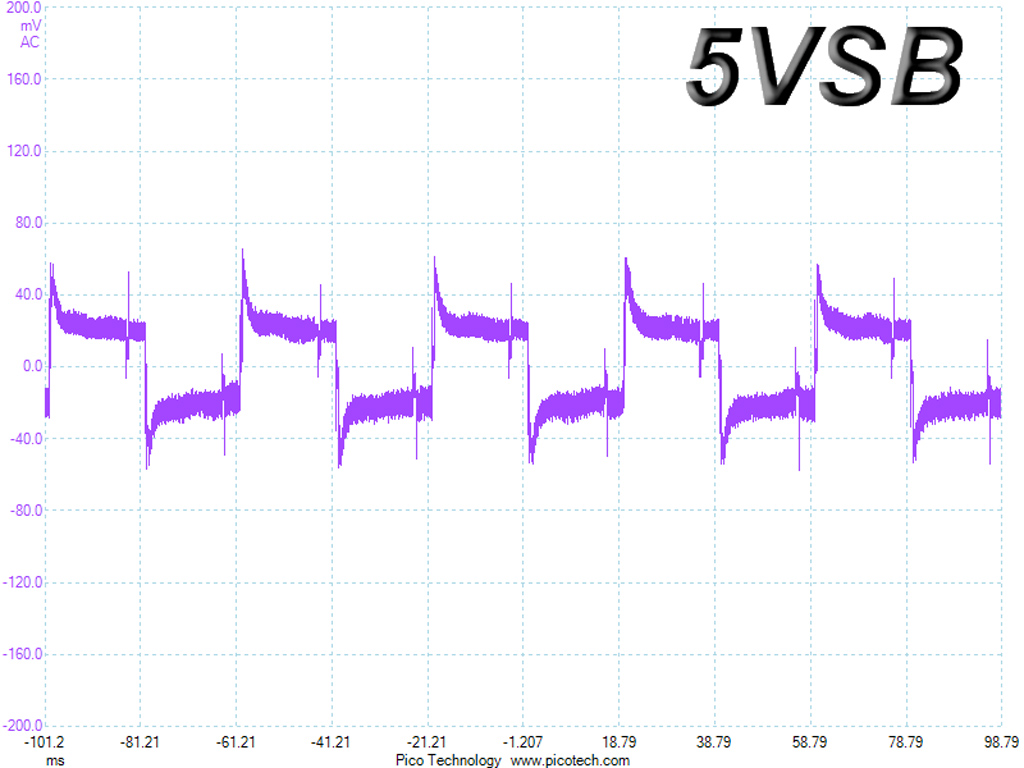
Transient Response At 20 Percent Load – 1ms
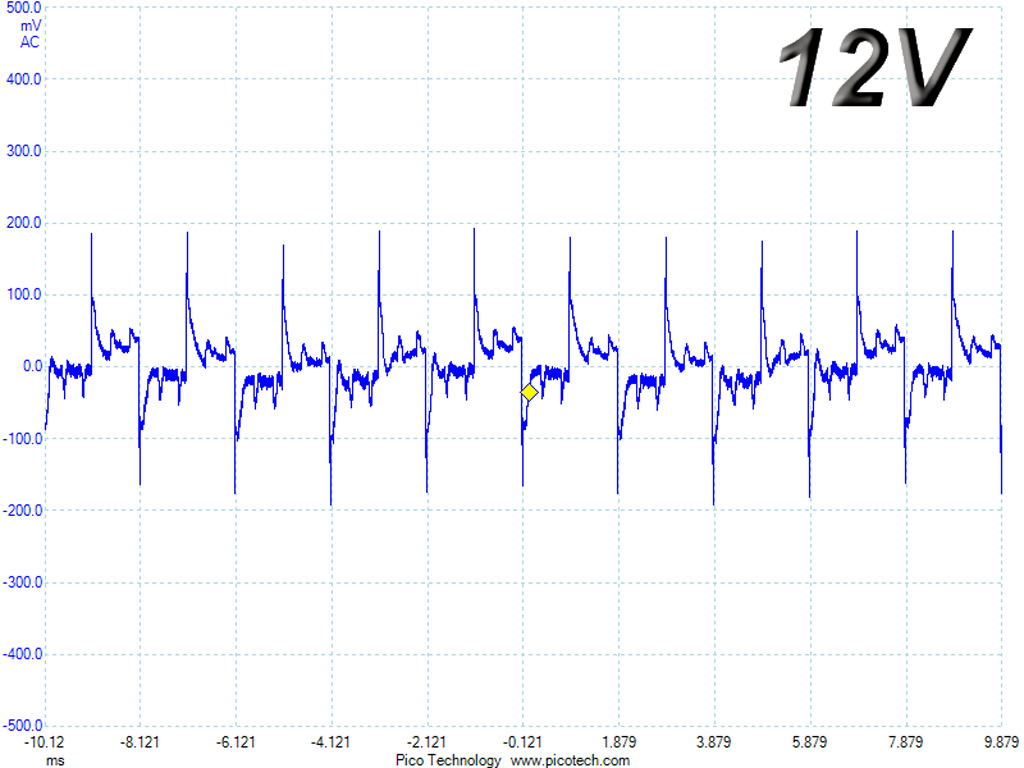
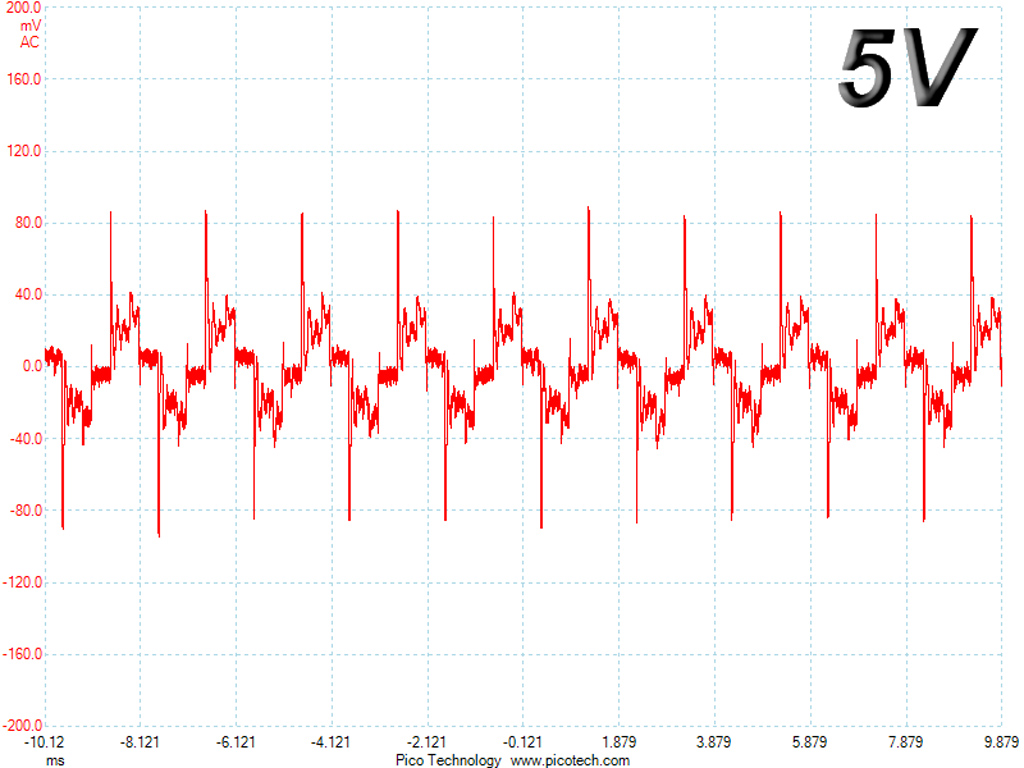

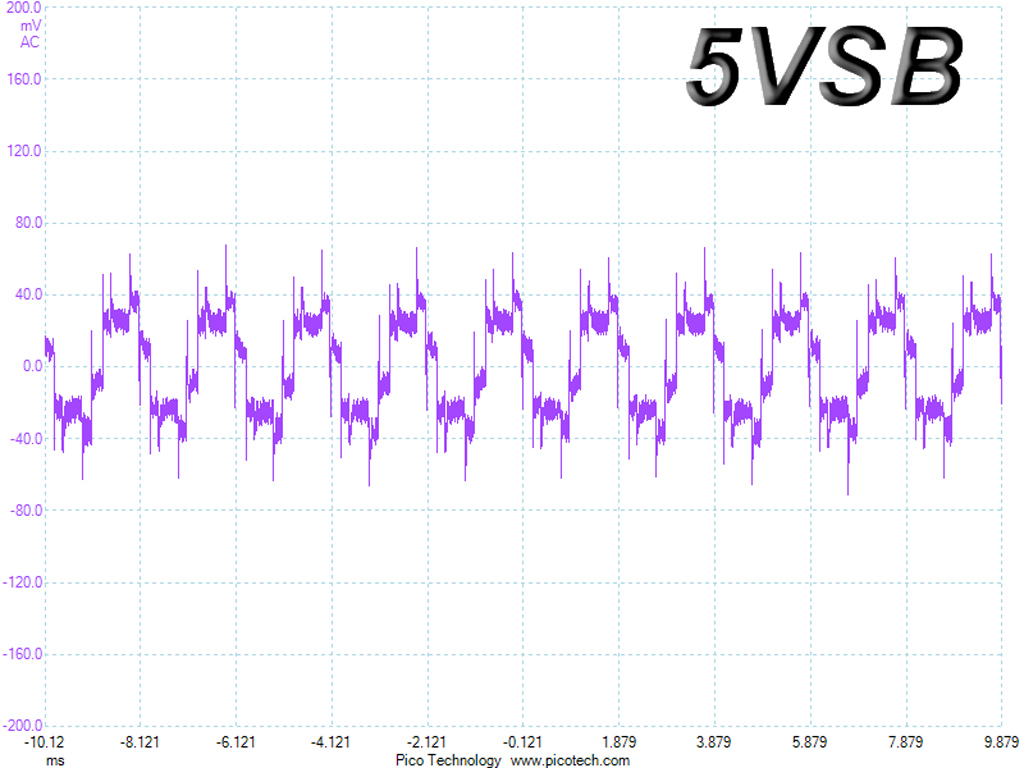
Transient Response At 50 Percent Load – 200ms


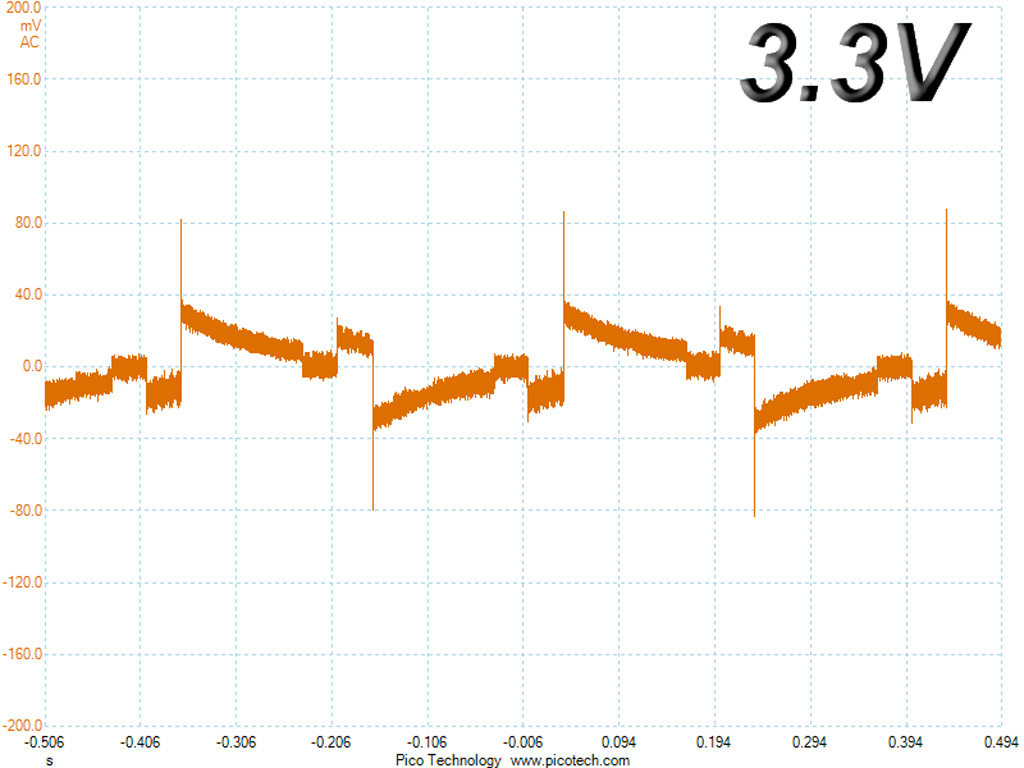
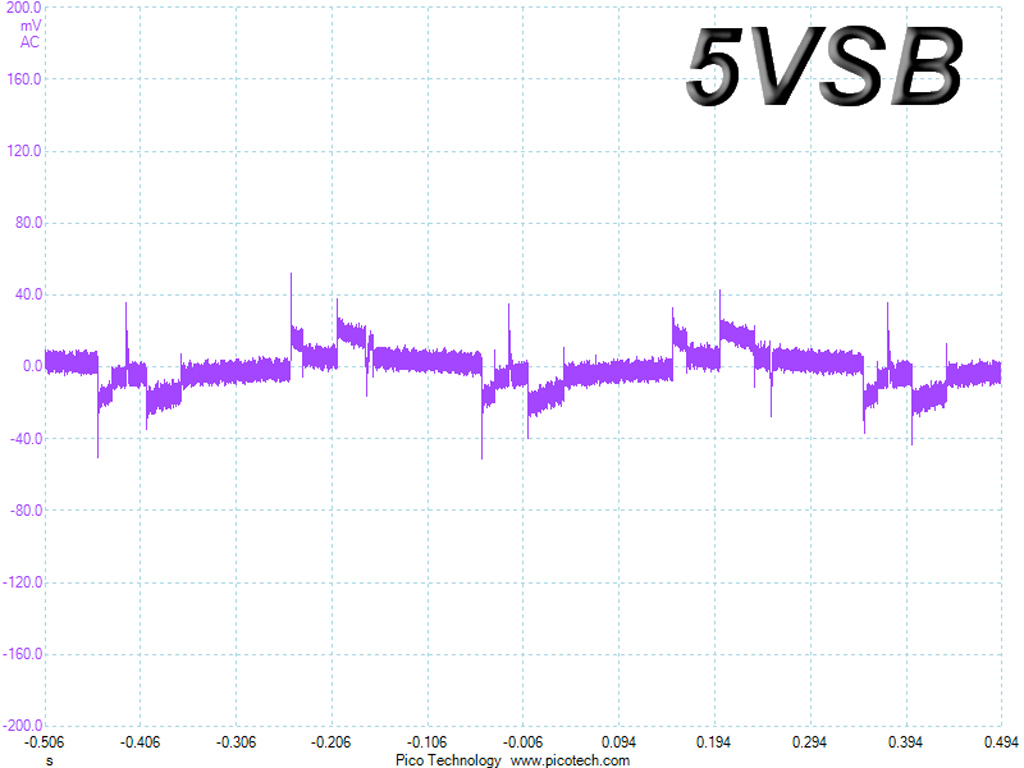
Transient Response At 50 Percent Load – 20ms
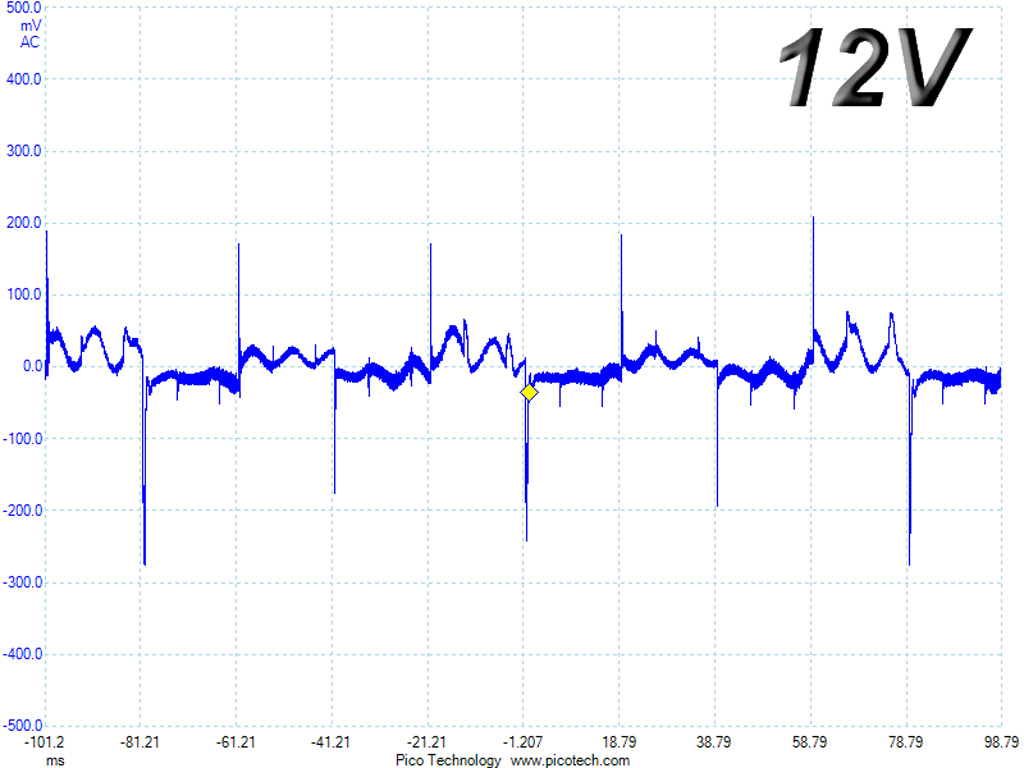
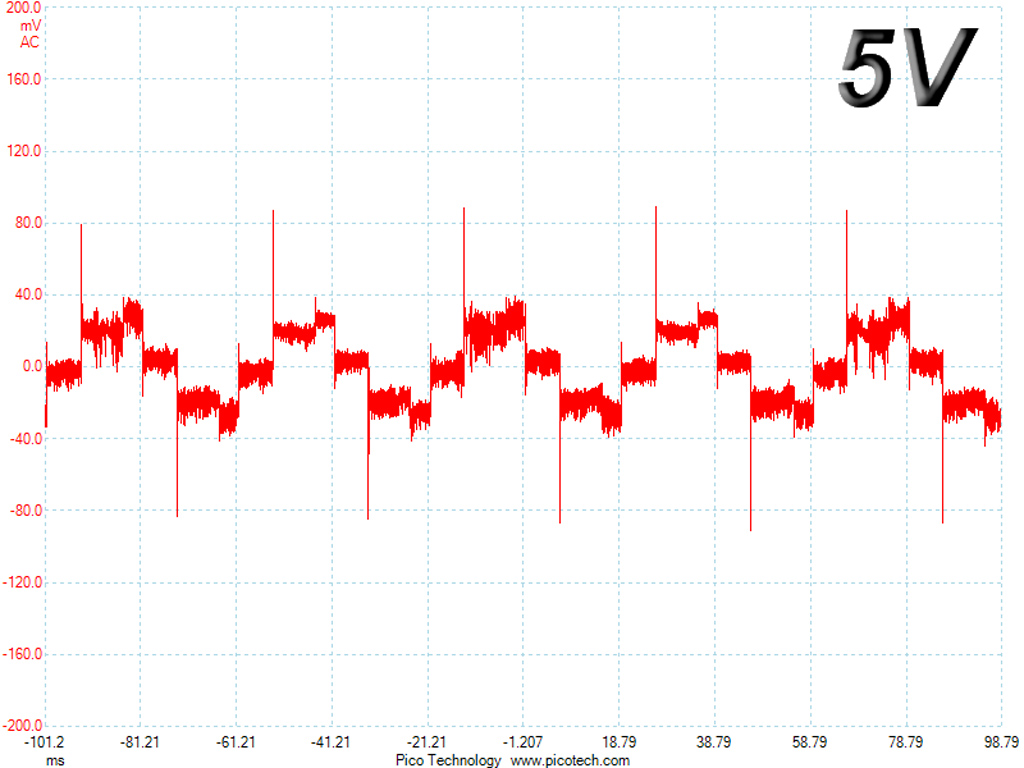
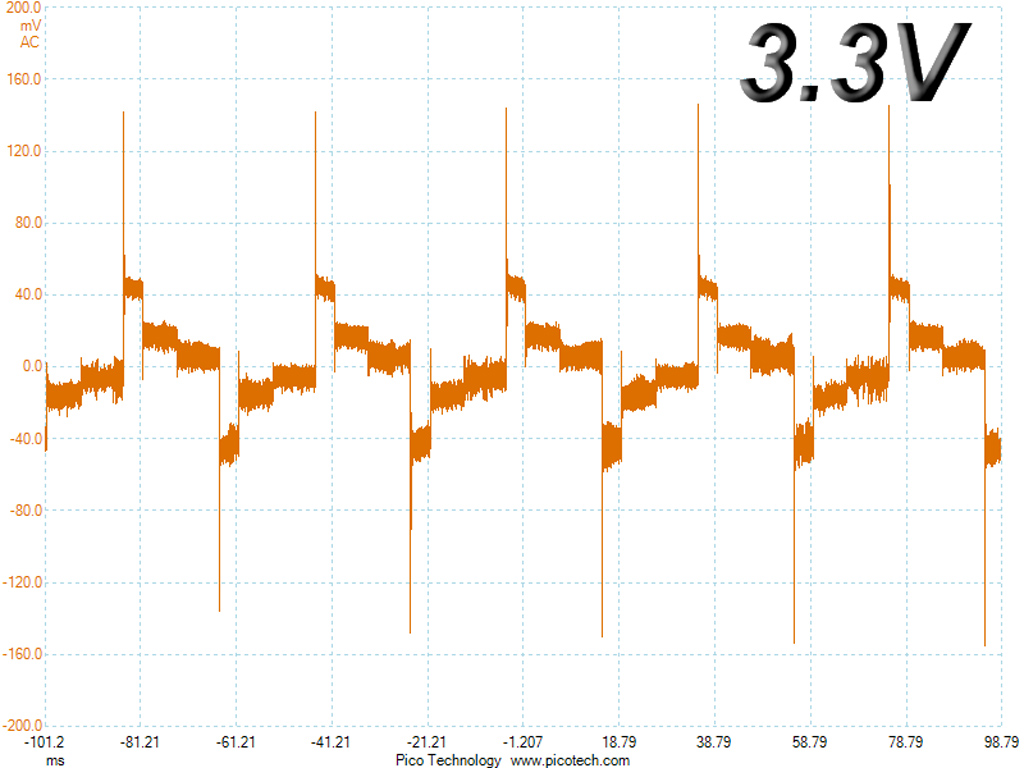

Transient Response At 50 Percent Load – 1ms
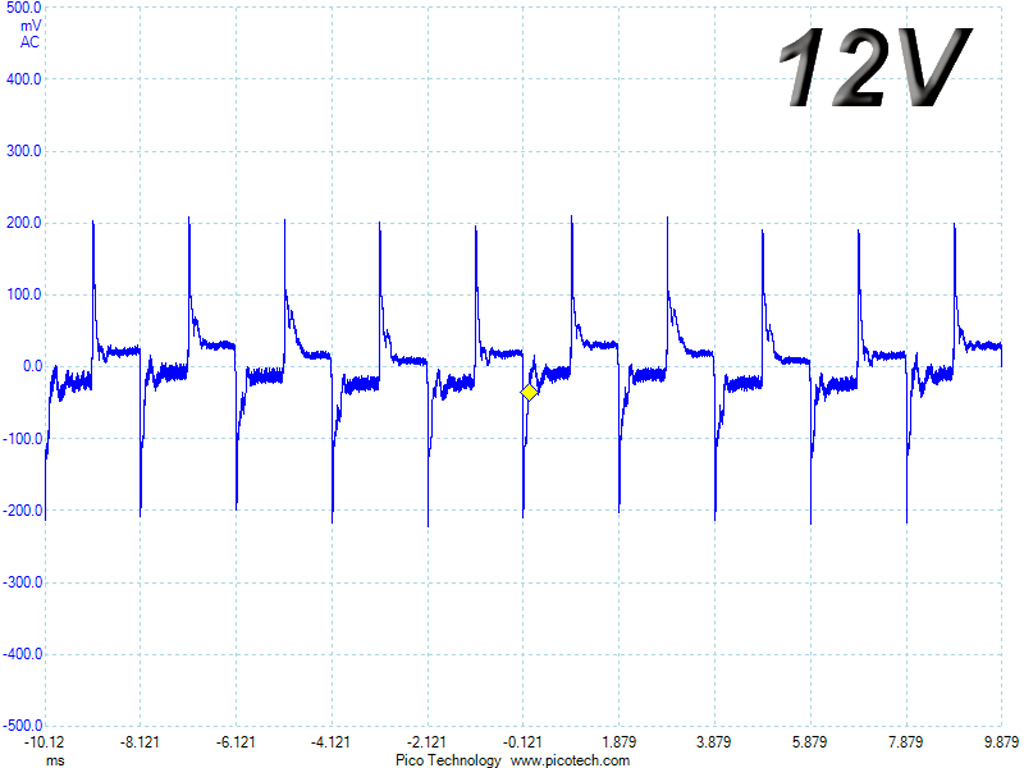
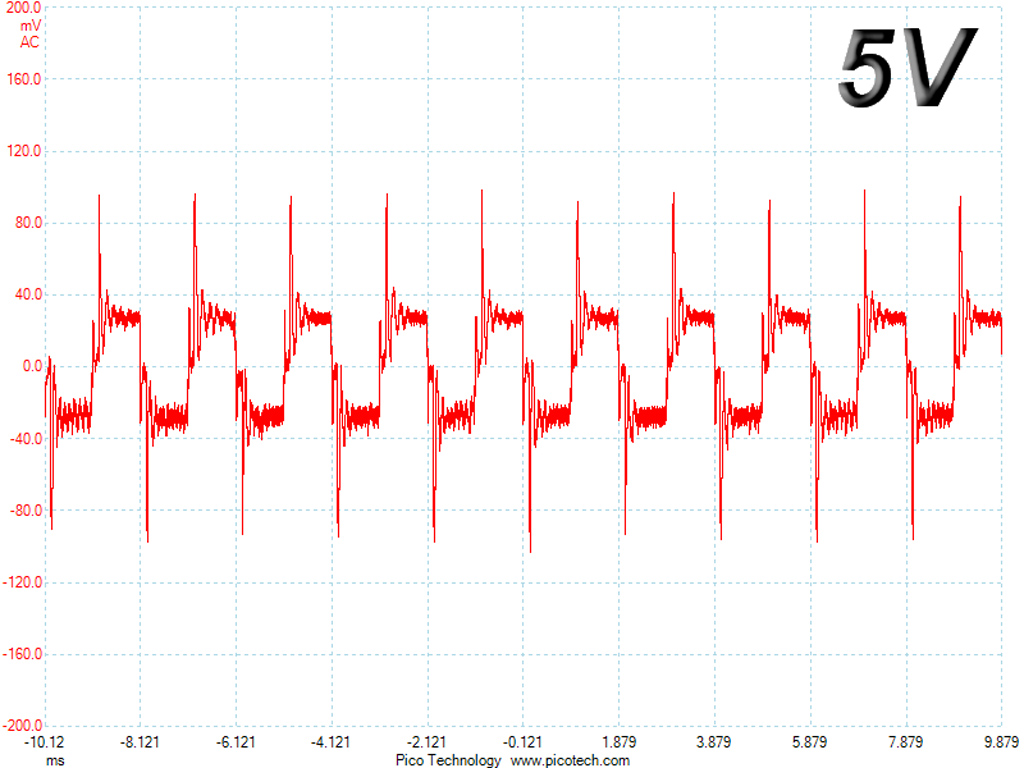
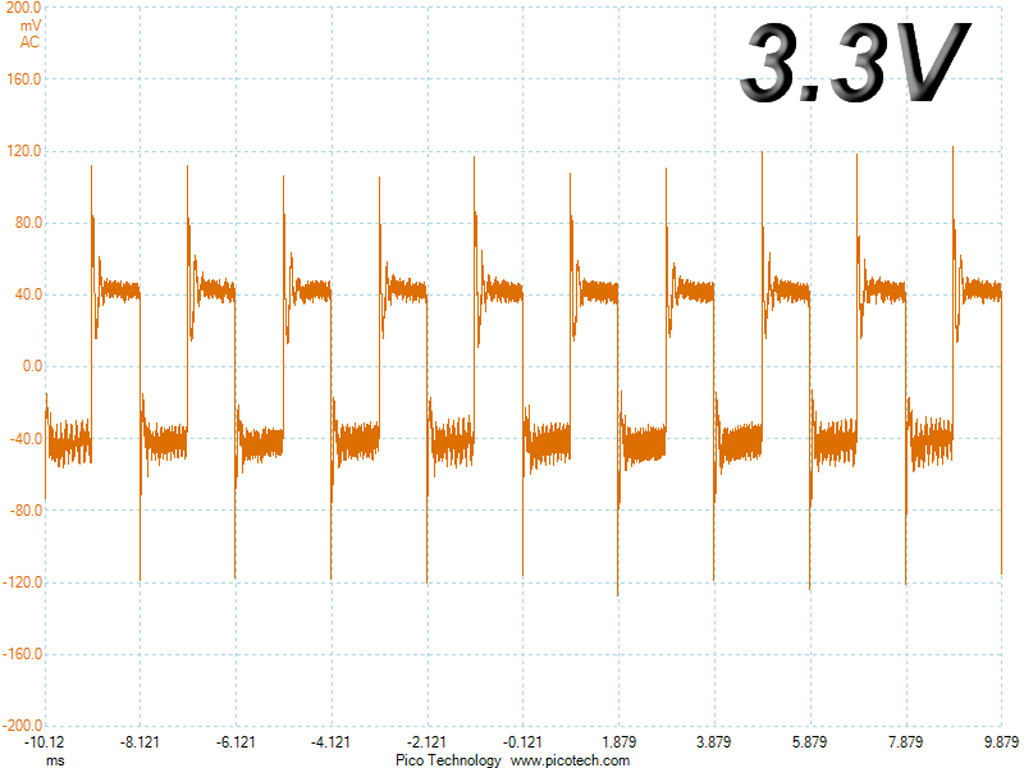
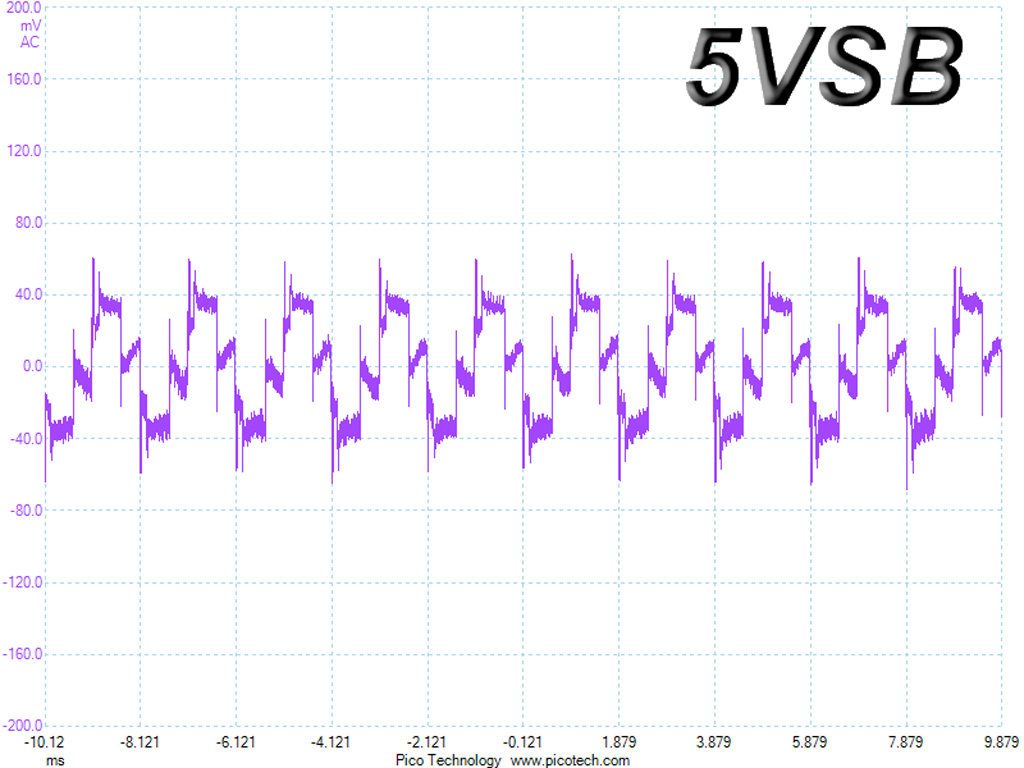
Turn-On Transient Tests
In the next set of tests, we measured the PSU's response in simpler transient load scenarios—during its power-on phase.
For the first measurement, we turned off the EPF500AWT, dialed in the maximum current its 5VSB rail could output, and switched the PSU back on. In the second test, we dialed the maximum load the +12V could handle and started the 500W supply while it was in standby mode. In the last test, while the PSU was completely switched off, we dialed the maximum load the +12V rail could handle before switching it back on from the loader and restoring power. The ATX specification states that recorded spikes on all rails should not exceed 10 percent of their nominal values (+10 percent for 12V is 13.2V, and 5.5 V for 5V).
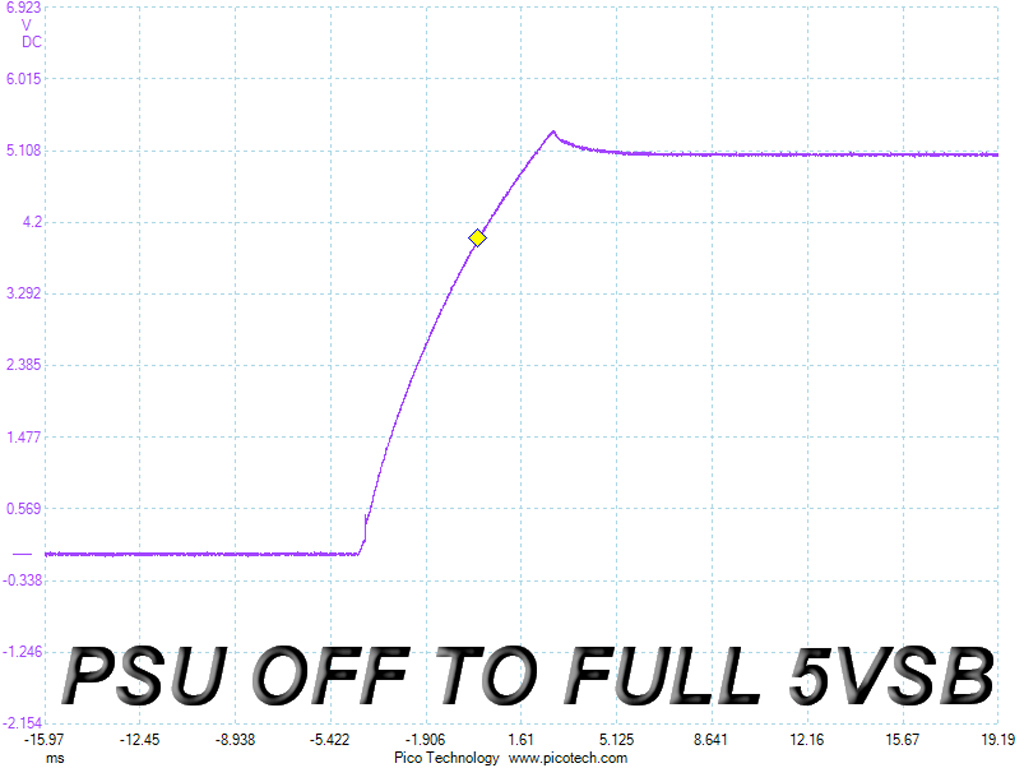

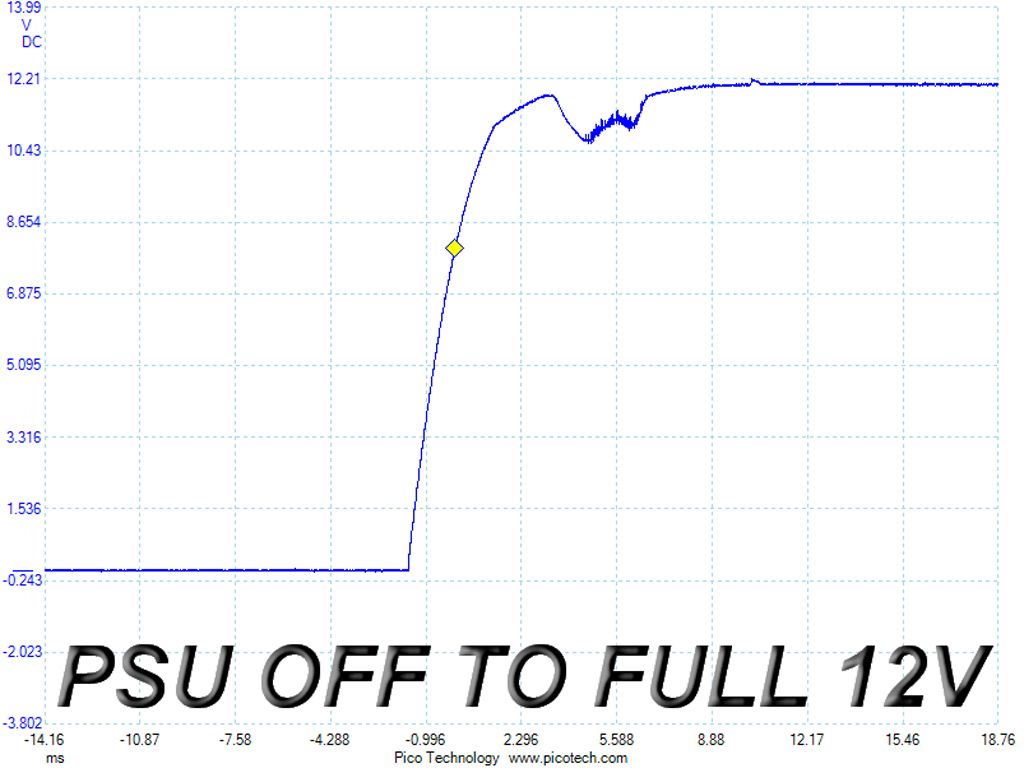
The voltage overshoot on the 5VSB rail is quite high (close to 5.5V). Some performance will be lost here. The results of the second turn-on transient test are pretty good, while in the last one there is a notable drop in the rail's voltage and a period of increased ripple before the voltage settles down to its nominal level. We expected to see better performance.
Current page: Transient Response Tests
Prev Page Cross-Load Tests And Infrared Images Next Page Ripple Measurements
Aris Mpitziopoulos is a contributing editor at Tom's Hardware, covering PSUs.
-
eglass I'd probably buy it. I like those cables and I'm running a 500W Enermax Liberty that is now 11 years old.Reply -
Anathemata How well does the dust-removal feature work? I mean, Van der Waals force is still a thing, and you need more than just a simple fan to blow out dust. Wouldn't a simple filter suffice?Reply
The sleeved cables are a nice touch. It'll be cheaper than buying a different power supply and separate sleeved cables. -
daddywalter Build quality isn't bad but could be better; lack of OTP is troublesome; and I'll agree with the reviewer that sleeved cables would be better offered as an option for modders. 80 Plus Platinum rating is a plus, of course; and 500 watts is adequate for most general-purpose computers that don't require multiple GPUs -- this PSU would probably outlast most SOHO builds, but then the initial price becomes more of a factor. Nice PSU, but IMHO not worth $140 with only a five-year warranty; at ten years I might consider it since then it should be good for at least three builds.Reply -
dstarr3 Reply19274544 said:I'd probably buy it. I like those cables and I'm running a 500W Enermax Liberty that is now 11 years old.
11 years is plenty of time for a company to have since dropped an amount of build quality. -
Robert Cook I'll add my voice, that auto play video needs to go. It is obnoxious, and adds lag to weaker devices.Reply
I like that cable pattern, it reminds me of the cables on my Enermax revolution 85+ 850W. (a great PSU despite its lower efficiency and age.)
How are poorly trimmed leads going to cause shorts if everything is locked inside a case? I only see that as an issue if you go dropping screws in there. -
Aris_Mp they aren't poorly trimmed only, some of them are really long and only a hair away from the other. Under extreme conditions this can cause problems (shorts) and there can be of course an EMI issue when leads are so close to each other. Also with such long leads the plastic shield under the PCB can get punctured or during the PCB's installation into the chassis, which applies pressure to the leads, the long ones will bend and probably get shorted; this means that some PSUs might be already broken. I don't think that every PSU that leaves the production line is tested, but only a percentage of them.Reply
There is a purpose behind the proper trimming of excessively long leads in every PCB that is installed into a metallic chassis. The use of a plastic shield under the PCB doesn't automatically solves all possible problems. -
WFang I'm hoping for a resurgence in power supply choices in the 500W and *LESS* category!Reply
I would rather see something like the amazing Seasonic Prime supplies in a 400W flavor than 600W and over...
Before I go on, I realize that if you run two GPU's or you really like to OC, obviously you need more and want more.. Great.. you already have a ton of great choices for those use-cases... I just wonder why we don't have more great quality choices in the lower Wattage ranges where probably a good 75% of even the enthusiast group could live comfortably.
I also realize that TDP - Thermal Design Power is NOT the same as power consumption, but it is easy to find TDP numbers, and a part that is designed to deal with e.g. 100W TDP is likely to consume around 100W (or less) even in peak. As such it becomes a handy metric for back of the envelope power budgeting that still ends up being fairly conservative.
With CPU's now more often in the lower half of 45W, 65W, and 95W TDP and the more recent GPU's all sitting at 300W or less in TDP, I'd argue that for non-OC'ed systems with one GPU and 1 or 2 HDD's and maybe an SSD, a great high efficiency 350W to 400W PSU will be a great choice. Feeling like that is pushing it? Fine, go 500W... but I don't see why you'd shop higher than that (for this use-case). Yet, good quality Titanium, Platinum, or Gold efficiency PSU's seem so hard to find in the sub 500W range. :(
On a side note, since I'm here complaining anyway: A looong time ago I heard Tom's mention the Seasonic Prime 600W fanless PSU, anyone know if/when that will become available in the US? (Or anywhere?)??? -
Marcus52 Reply19274544 said:I'd probably buy it. I like those cables and I'm running a 500W Enermax Liberty that is now 11 years old.
Enermax was my favorite PSU maker when they made their own, but unfortunately they've chosen OEMs that are "adequate" not "great" to replace their manufacturing facility. I've paid their premium in the past, but right now EVGA is on the top of my list. Super Flower makes their top-of-the-line PSUs and build quality is superb, as are test bench results.
Seasonic is also on my list of "will buy", and several other brands use Seasonic or Super Flower, so I wouldn't be opposed to buying one from someone like Corsair - as long as it tested well on reputable hardware sites.
Never buy a PSU that doesn't review well. I've learned that the hard way. Build quality matters.